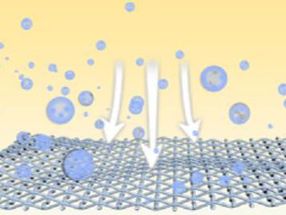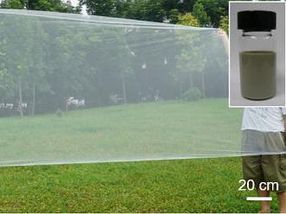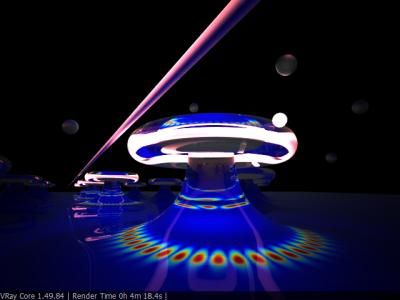Large-scale window material developed for PM2.5 capture and light tuning
Advertisement
Tuning the light intensity and reducing the concentration of atmospheric particulate matter (PM) in commercial buildings are both crucial to keep indoor people comfortable and healthy. While, the intelligent smart windows fabricated on the flexible transparent electrodes can change its transmittance in response to electrical or thermal stimulus to tune the light intensity of commercial buildings to maintain thermal comfort. Up to now, it is still a significant challenge to fabricate the large-scale flexible transparent smart window for high-efficiency PM2.5 capture.

A schematic diagram illustrated the PM filtration process.
YU Shuhong

Photograph of a large-scale conductive nylon mesh. Inset is photograph of Ag nanowire ink using ethanol as a solvent with a concentration of 3.92 mg mL-1
YU Shuhong


Recently, a research team led by Prof. YU Shuhong from the University of Science and Technology of China (USTC) develops a simple solution based process to fabricate large-area Ag-nylon flexible transparent windows for high-efficiency PM2.5 capture.
It takes only about 15.03 dollars and 20 minutes to fabricate 7.5 m2 Ag-nylon flexible transparent windows without any modification showing a sheet resistance of as low as 8.87 Ω sq-1 and optical transmittance of 86.05%.
The obtained Ag-nylon mesh serves not only to turn the indoor light intensity as thermochromic smart windows after uniformly coated with thermochromic dye but also to purify indoor air as high-efficiency PM2.5 filter.
The time-dependent temperature profiles and uniform heat distribution show that the obtained Ag-nylon electrodes can be used as an ideal intelligent thermochromic smart window with excellent mechanical stability whose performance remains stable even after 10,000 bending cycles of bending test with a minimum bending radius of 2.0 mm and 1,000 cycles of stretching deformation with mechanical strain as high as 10%.
In addition, the Ag-nylon electrodes can be constructed for PM filter showing a removal efficiency of 99.65% and maintaining stable even after 100 cycles of PM filtration and cleaning process.
The success of the present design strategy provides more choices in developing next-generation flexible transparent smart windows and air pollution filters.























































